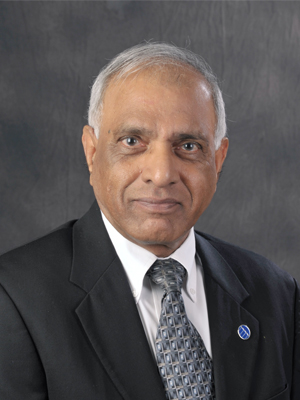 Dr. J.N. Reddy, the Oscar S. Wyatt Jr. Endowed Chair, Regents Professor and Distinguished Professor in the Department of Mechanical Engineering at Texas A&M University, has received three new honors.
Dr. J.N. Reddy, the Oscar S. Wyatt Jr. Endowed Chair, Regents Professor and Distinguished Professor in the Department of Mechanical Engineering at Texas A&M University, has received three new honors.
The American Society of Mechanical Engineers (ASME) presented Reddy with its highest honor — the ASME Medal. The award, which was established in 1920, recognized Reddy for his eminently distinguished engineering achievement.
Reddy also received the Society of Engineering Science’s 2016 William Prager Medal, which is awarded to those who have demonstrated outstanding research contributions in either theoretical or experimental solid mechanics, or both. Additionally, Reddy was recognized as a Web of Science Highly Cited Researcher, which recognizes leading researchers in the sciences and social sciences from around the world.
Reddy, who came to Texas A&M as an endowed chaired professor in 1992, is the author of more than 550 journal papers and 20 books, several with second and third editions. According to Google Scholar he has been cited 49,755 times on topics such as energy principles, variational methods plates and shells, composite materials, mechanics of solids and the finite element method and its applications.
His pioneering works on the development of shear deformation theories have had a major impact and have led to new research developments and applications.
Reddy stands by the belief that the hallmark of a successful engineer is to have a strong grasp of fundamental concepts and a creative-thinking capability to apply the fundamental concepts of the profession or discipline to solve real-life problems.
Reddy’s current research deals with seven- and 12-parameter shell theories and nonlocal beam and plate theories using the ideas of Eringen, Mindlin, Koiter and others. Reddy and Dr. Arun Srinivasa, associate department head and the Holdredge/Paul Professor at Texas A&M, developed a thermodynamically based strain gradient elasticity theory that contains Mindlin’s model as a special case. He is also working on internal polar continuum theories in which varying internal rates of rotations and conjugate movements that exist in all deforming homogeneous and isotropic continua are incorporated in the derivations of the conservation and balance laws. It is shown that this theory leads to a more complete thermodynamic framework as it incorporates additional physics due to varying internal rates of rotation that is neglected in the conventional thermodynamic framework.
Reddy’s earlier research focused primarily on mathematics of finite elements, variational principles of mechanics, shear deformation and layerwise theories of laminated composite plates and shells, analysis of bimodular materials, modeling of geological and geophysical phenomena, penalty finite elements for flows of viscous incompressible fluids, least-squares finite element models of fluid flows and solid continua. Some of the ideas on shear deformation theories and penalty finite element models of fluid flows have been implemented into commercial finite element computer programs like ABAQUS, NISA, and HyperXtrude.